FAQs
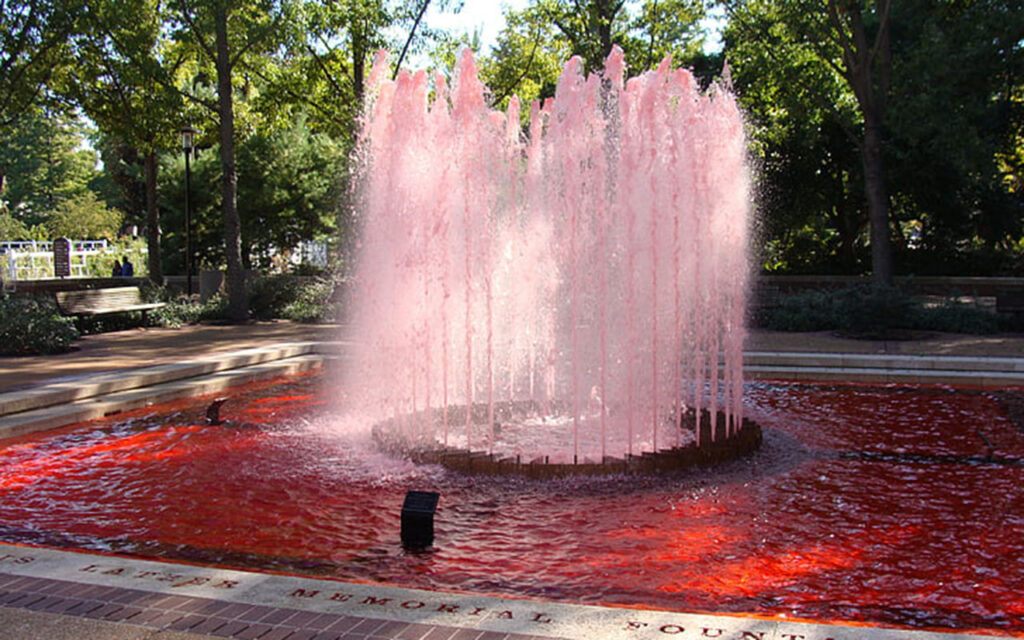
What are the key points during the fountain manufacturing?
Pipeline Manufacture
Fountain pipe bending, welding, polishing and other process will be done strictly as per the fountain drawings at Himalaya Fountain’s factory. The position of nozzles, lights and pumps are precisely located at pipeline system during production.
Hydraulic Calculation and Nozzle Production
Himalaya Fountain will do hydraulic calculation of fountain as per the water spray height and water pattern requirements, then we can make a custom design on the adjustable angles, inlet and outlet sizes of nozzles, and fountain nozzles production and assembling will be done at last.
Read More
Hydraulic Calculation and Pump Configuration
Himalaya Fountain makes hydraulic calculation of fountain to know the flow and lift of the water spray, so as to equip suitable fountain pumps for clients.
Audio System Design and Configuration
According to the requires of fountain show, Himalaya Fountain will make a custom configuration of audio devices, and program for the audio system through our self-developed control software, making it synchronized with the fountain.
Fountain Control Cabinet and Software Manufacture
According to the needs of music performance, the pump adopts NC frequency conversion or relay control design. Determine the control circuit composition and control cabinet number and configuration. Purchase electronic components according to requirements, manufacture according to design drawings, assemble control cabinet. Collect customers’ fountain music, use Himalaya Music fountain editing and production system (Himalaya Fountain company’s software copyright product) for program editing and computer system preinstallation.

What Are The Benefits of Having a Musical Fountain?
1. Musical fountain can beautify and protect the environment
There are many types of fountains nowadays, the most crucial function of them is to show the beauty and environmental protection of fountains. On one hand, musical fountains can express the strength of builders, reflect the class of a residential area, decorate a city square or a shopping mall, all of these functions have brought goodness to our life.
On the other hand, waterscape fountains, especial the large musical fountain show, both of them are making our environment healthier and we are happy with having the musical fountains around. When the fountain sprays water, it will occur amount of water mist in the air, which can add humidity of air, reduce dust and lower temperatures. The water of fountains can be recycled after some treatment.
Read More
Musical fountain is beatifying our environment and meanwhile saved large amount of water resources.The water from the fountain produces a lot of negative oxygen ions, which is good for people’s health.
2. The integrated function of musical fountains
As the technology is rapidly developing, we are not satisfied with watching a dancing fountain and listening to music only. Music, fountain, lighting, laser, water screen projector, even stage art, actor performance and drone etc, all these elements are integrated in one story, which formed a large comprehensive water show.
3. The art function of musical fountains
Bright lighting beams and water columns shoot into the sky, it’s a feast of visual which consists of sound, lighting, electricity and water. Generally speaking, the art effect of landscape fountains depend on the continuously innovative design concept and rich experiences of landscape construction, the landscape fountains should be harmonized with the surroundings.

What Kind of Music Can Be Played With a Musical Fountain?
What kind of music do you decide to use in your musical fountains? Himalaya Music Fountain Company is giving some options for choices:
1. Some classical piano pieces like Canon in D, Für Elise, MARIAGE D’AMOUR, Ballade pour Adeline etc.
2. Some popular songs in famous movies, such as My Heart Will Go On, See You Again etc.
3. Some music or songs special for holidays, like Jingle Bells, Silent Night, We Wish You A Merry Christmas etc.
4. Some music or songs which are related to the local culture or popular at local.
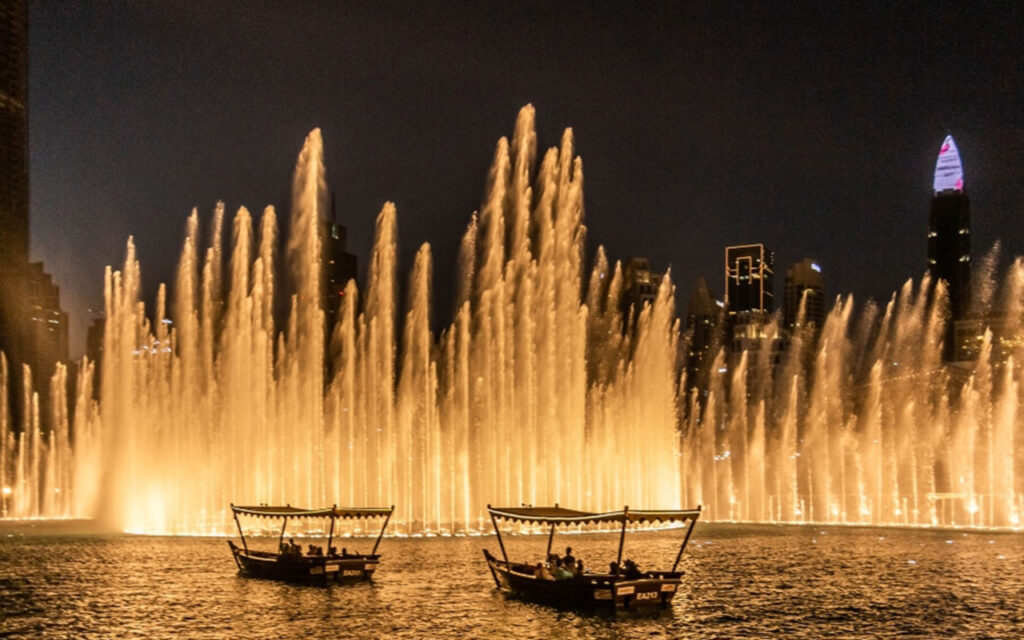
What is The Best Place to Buy a Musical Fountain?
Himalaya Music Fountain has been engaged in fountain industry for over 15 years, we are one of the largest music fountain supplier in Central China with professional expertise in fountain design, manufacture, installation and maintenance.
Since establishment, we have set up an in-house R&D team for fountain design and control, have kept cooperation with Central South University from the very beginning of company founding until now. During the 15 years, Himalaya has got 8 patents of fountain technology, built more than 100 fountain projects in 30+ countries all over the world. In year 2018, Himalaya Music Fountain established cooperation with Syncronorm Company, a renowned international control brand in German, imported their fountain control software and advanced technology to apply in large musical fountain shows. We offer a wide range of fountain products including fountain nozzles, low-voltage underwater RGB LED lamps, musical fountains, programmed fountains, digital water curtain, laminar flow fountains, jumping jet fountains, fire water fountains, 2D & 3D digital swing fountains and fountain control etc, contract to build large-scale music fountains and laser water screen movies, provide one-stop solutions of all kinds of fountains.

What do we need pay attention to during the fountain installation?
1. The main fountain pipes should be laid horizontally and the branch pipes should be vertically fixed on the main pipeline.
2. Cable laying and connecting should be strictly as per the drawings, obey the rule that the less joints underwater the better.
3. The control panels should be connected as per the drawings and with marks clearly.
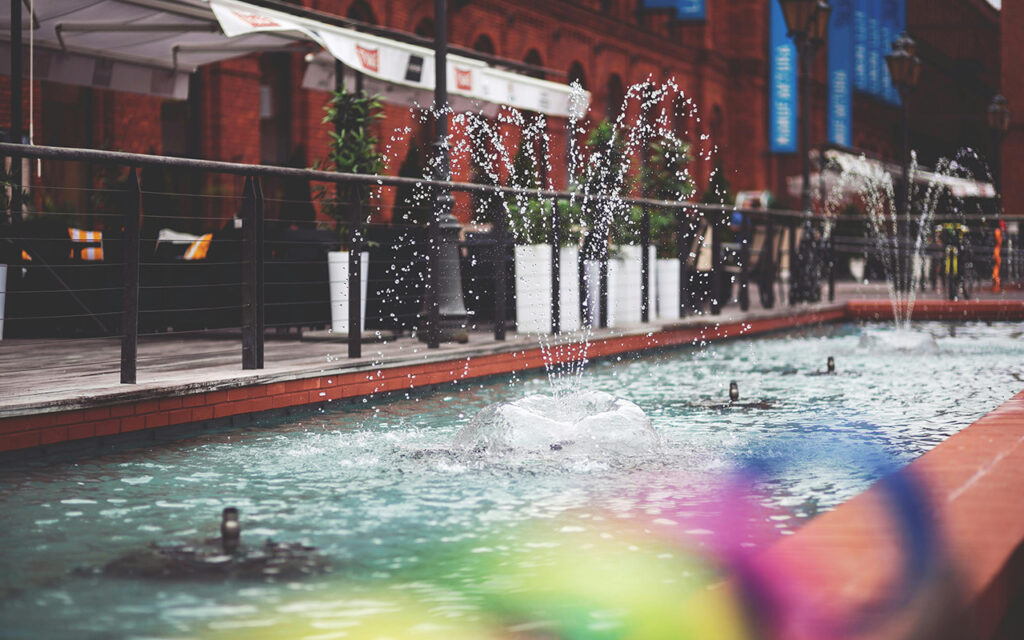
What are there different types of fountains?
In general, music fountains are classified into 5 types as follows.
1. Program-control Fountain
Program-control fountains are normally in small scale and with single colors, commonly applied for gardens, yards or indoor rooms.
2. Floating Fountain
Floating fountain is to fix the fountain equipment onto a floating foundation, commonly used in a big lake or river. A lift device can be added to the floating system, which is convenient for daily maintenance and protect the equipment from being frozen in winter.
Read More
3. Dry-deck Fountain
Dry-deck fountain is also know as underground fountain or invisible fountain, it is to set all the fountain equipment underground and use stone tiles or other materials to cover and decorate the surface on ground. It is normally applied for shopping malls or squares.
4. Interactive Fountain
Interactive fountains are mainly designed for people playing, matrix fountain, laminar flow fountain, jumping jet fountain and digital swing fountain are the common types of interactive fountains we have seen in our daily life.
5. Digital Water Curtain
Digital water curtain is also known as graphical water curtain, digital waterfall, graphical waterfall. The graphic, text or pattern on waterfall is formed through the opening and closing of the solenoid valves which are controlled by fountain programs. Digital water curtains are normally used in hotels, shopping malls, showrooms or outdoor squares etc, which is very suitable for commercial promotion activities.

What materials are used for fountains?
Fountains can be constructed using a variety of materials, depending on their design, style, and location. Here are some common materials used for fountains:
Stone:
Stone is a popular choice for fountains due to its durability and aesthetic appeal. Materials such as granite, marble, limestone, and sandstone are commonly used. Stone fountains can be carved into intricate designs or left in a more natural, rugged form.
Concrete:
Concrete is a versatile material used in fountain construction. It can be molded into various shapes and sizes, making it suitable for both modern and traditional fountain designs. Concrete fountains are often reinforced with steel for added strength.
Metal:
Metals like bronze, copper, and stainless steel are employed in fountain construction. Metal fountains can offer a contemporary and elegant look. They are often used for sculptural elements, spouts, or decorative accents in combination with other materials.
Read More
Ceramic and Porcelain:
These materials are commonly used for smaller, decorative fountains or fountain components like bowls and basins. They come in various colors, finishes, and patterns, adding a touch of charm to the overall design.
Glass:
Glass fountains can create a stunning visual effect. Tempered or laminated glass is typically used due to its strength and safety properties. Glass can be combined with other materials, such as metal or concrete, to create unique and modern fountain designs.
1.Resin:
Resin is a synthetic material that can mimic the appearance of natural stone or metal. It is lightweight, durable, and can be molded into intricate shapes. Resin fountains are often used in outdoor settings due to their weather resistance.
Plastics: In some cases, plastic materials like fiberglass or acrylic may be used for constructing smaller, lightweight fountains. These materials are relatively affordable, easy to shape, and resistant to corrosion.
It's important to note that the choice of materials depends on factors such as budget, desired aesthetic, location (indoor or outdoor), and maintenance considerations.
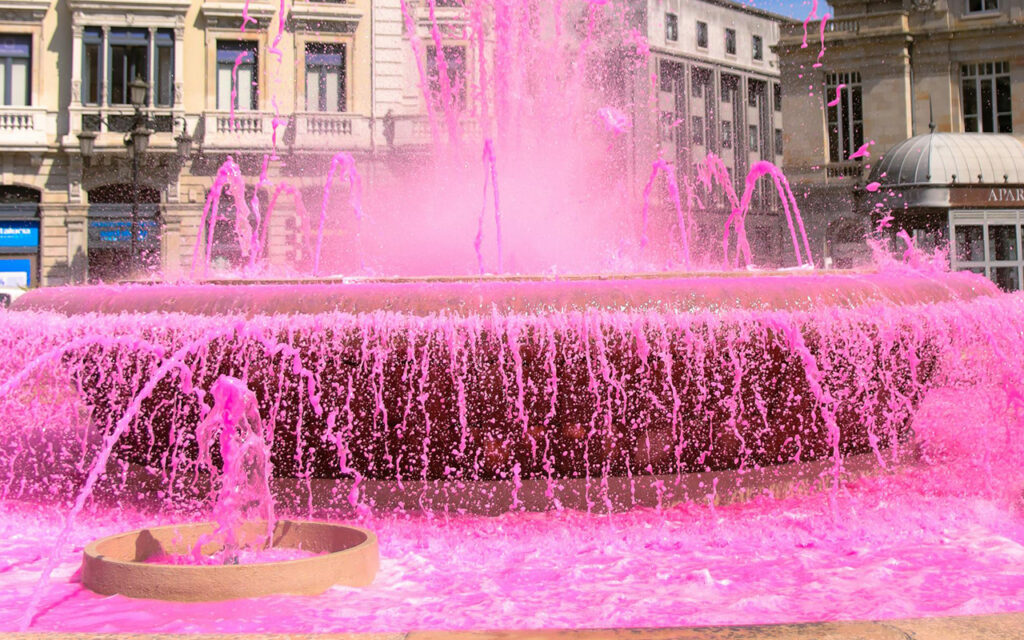
What are the common malfunctions in a dancing fountain show?
Dancing fountains are complex systems that involve the synchronization of water, lighting, music, and sometimes other elements like lasers or projections. As with any technical system, various malfunctions can occur. Here are some common malfunctions that can happen in a dancing fountain show:
1. Water Flow Issues:
Problems with water flow can occur due to clogged nozzles, insufficient water pressure, or malfunctioning pumps. This can result in uneven water patterns, reduced height or range of water jets, or even complete failure of certain water effects.
2. Electrical Malfunctions:
Dancing fountains rely on electrical systems to control the water pumps, lights, and other components. Electrical issues such as short circuits, faulty wiring, or power supply disruptions can cause disruptions in the synchronized performance.
Read More
3. Lighting Problems:
The lighting effects in a dancing fountain show are crucial for creating visual impact. Malfunctions in lighting fixtures, such as burned-out bulbs, faulty connections, or programming errors, can lead to inconsistent or unbalanced lighting effects.
4. Synchronization Errors:
Achieving precise synchronization between the water, lights, and music is essential for a captivating dancing fountain show. Technical glitches, software bugs, or programming errors can disrupt the synchronization, resulting in misaligned movements and effects.
5. Sound System Failures:
Dancing fountains often incorporate music or sound effects to enhance the overall experience. Malfunctions in the audio system, including speaker failures, connectivity issues, or incorrect playback, can negatively impact the show's audio component.
6. Control System Malfunctions:
The control system, which manages the various elements of the dancing fountain, can experience malfunctions. This may include issues with the control software, communication failures between different components, or sensor errors.
7. Environmental Factors:
Outdoor dancing fountains are exposed to weather conditions such as wind, rain, and temperature changes. Adverse weather conditions can affect the fountain's operation, leading to temporary or prolonged malfunctions.
It's important to note that well-maintained and properly designed dancing fountains are less prone to malfunctions. Regular maintenance, periodic inspections, and prompt repairs can help mitigate these issues and ensure smooth and reliable performances.
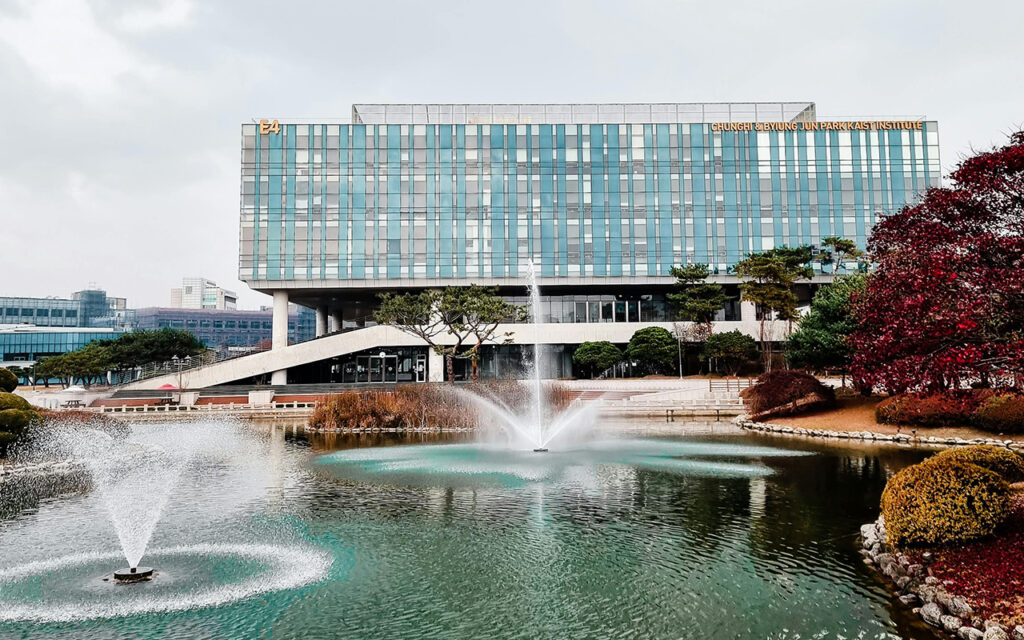
What are the most important parts of a music fountain?
A music fountain consists of several important components that work together to create a synchronized and captivating show. The key parts of a music fountain include:
1. Water Jets/Nozzles:
Water jets or nozzles are responsible for creating various water effects such as vertical sprays, fan sprays, arcs, and patterns. They come in different shapes and sizes to produce different water formations and choreography.
2. Pumping System:
The pumping system is the heart of a music fountain. It includes pumps that draw water from a reservoir or a recirculating system and supply it to the fountain's jets. The pumping system controls the flow, pressure, and height of the water jets.
Read More
3. Control System:
The control system manages the synchronization of the music, lights, and water effects. It typically includes a central control panel, software, and electronic components that allow for precise coordination between different elements of the fountain show.
4. Lighting System:
Lighting plays a crucial role in enhancing the visual impact of a music fountain. The lighting system includes various types of fixtures, such as underwater lights, spotlights, color-changing LEDs, or laser projectors. These lights are strategically placed to illuminate the water jets and create vibrant and dynamic effects.
5. Sound System:
The sound system provides the music or audio accompaniment for the fountain show. It includes speakers strategically positioned around the fountain area to deliver high-quality audio synchronized with the water and lighting effects.
6. Water Treatment System:
To maintain water quality and prevent clogging of nozzles, a water treatment system is essential. It typically includes filters, chemical dosing systems, and recirculation mechanisms to keep the water clean and free from debris and algae.
7. Structure and Basin:
The fountain's structure and basin provide the framework for the water display. They are designed to support the water jets, lighting fixtures, and other components securely. The basin collects the water for recirculation and may include drainage systems to control water levels.
8. Control Software:
Specialized control software is used to program and synchronize the various elements of the music fountain show. It allows operators to create intricate choreographies, adjust timing, and control the intensity of water and lighting effects.
These components work in harmony to create an immersive and captivating music fountain show, where water, lights, and music are synchronized to produce mesmerizing performances. Each part plays a crucial role in achieving the desired visual and auditory effects.
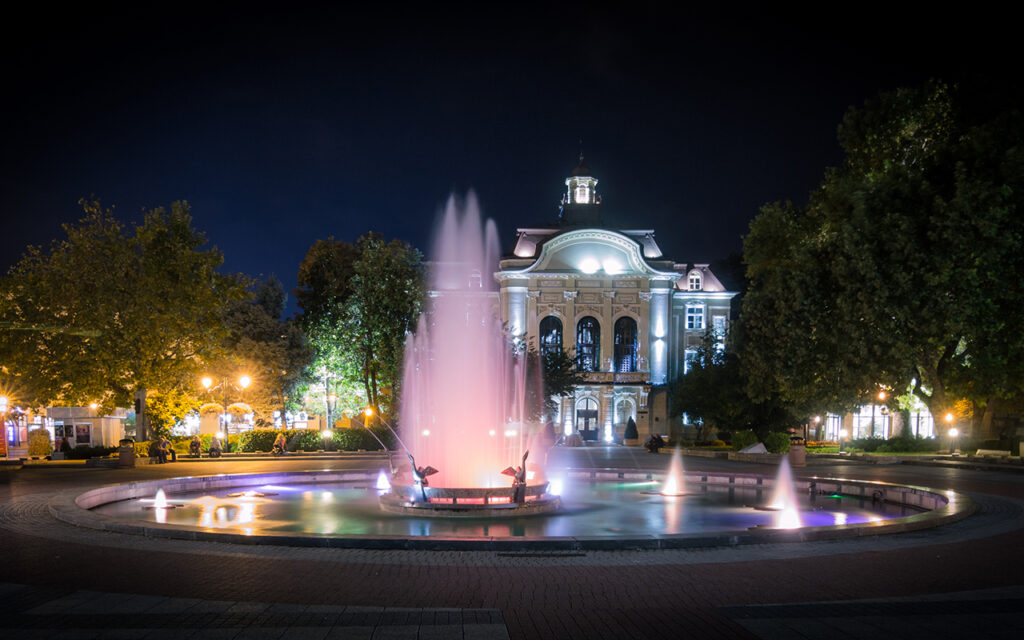
What does a fountain consist of?
A fountain typically consists of the following basic components:
1. Basin or Reservoir:
The basin or reservoir is the structure that holds and collects the water used in the fountain. It can be in various shapes and sizes, depending on the design and scale of the fountain.
2. Pumping System:
The pumping system circulates the water from the basin to the fountain's water features. It typically includes a pump or pumps that draw water from the basin and push it through pipes or tubes to the desired locations.
Read More
3. Water Features:
Water features are the elements that create the visual displays in the fountain. They can include jets, sprays, cascades, or waterfalls. Water features can be achieved through various mechanisms such as nozzles, spouts, or water channels.
4. Nozzles and Sprinklers:
Nozzles and sprinklers are the mechanisms that control the flow and pattern of the water. They come in different shapes and sizes, allowing for a variety of water effects, such as vertical sprays, fan sprays, or misting.
5. Plumbing System:
The plumbing system consists of pipes, hoses, and connectors that transport water from the pumping system to the water features. It ensures proper water distribution and flow throughout the fountain.
6. Lighting System:
Lighting plays a crucial role in enhancing the visual impact of the fountain, especially during nighttime displays. The lighting system includes fixtures such as underwater lights, spotlights, or color-changing LEDs that illuminate the water and create different lighting effects.
7. Control System:
The control system manages the operation and synchronization of the various fountain components. It includes controls, timers, and sensors that regulate the water flow, lighting effects, and sometimes music, if applicable.
8. Electrical Components:
Fountains often require electrical components to power the pumping system, lighting system, and control system. These components include electrical cables, connectors, switches, and sometimes transformers.
9. Decorative Elements:
Depending on the design, fountains can incorporate decorative elements such as sculptures, statues, mosaic tiles, or architectural features. These elements add aesthetic appeal and can be integrated into the overall design of the fountain.
10. Water Treatment System:
In some cases, fountains may include a water treatment system to maintain water quality and prevent clogging or algae growth. This system may include filters, chemical dosing systems, or ultraviolet sterilizers.
These components work together to create the visual and auditory experience of a fountain. While the exact composition and complexity of a fountain may vary depending on its design, purpose, and scale, these basic elements form the foundation of most fountain structures.


